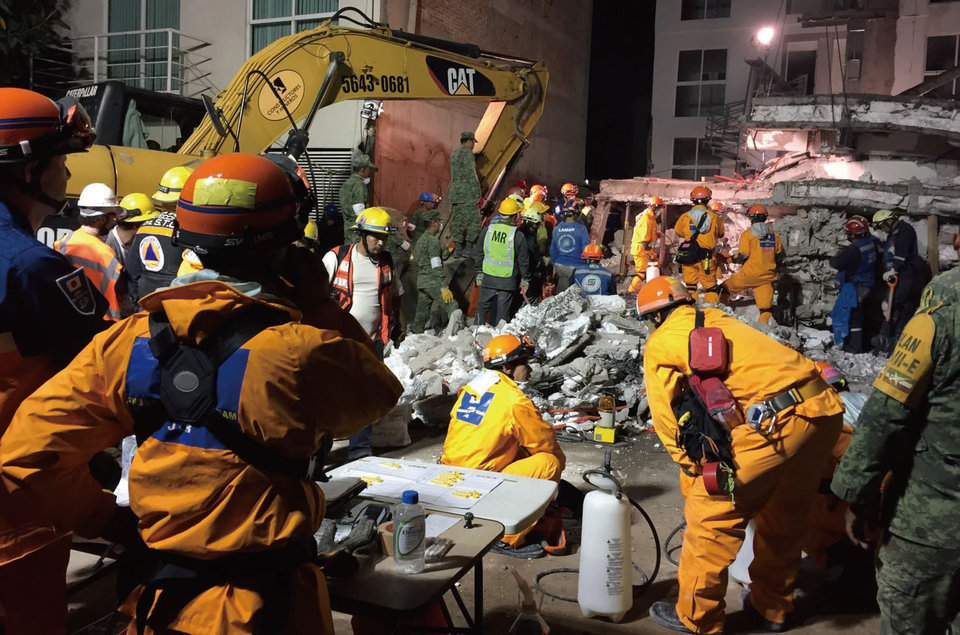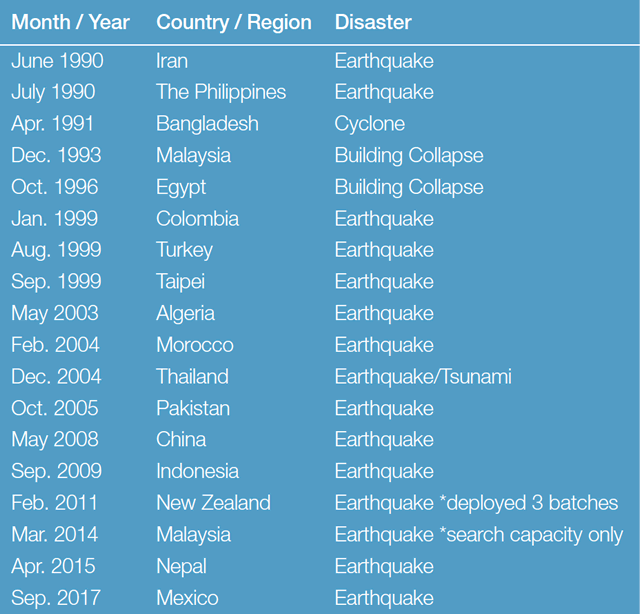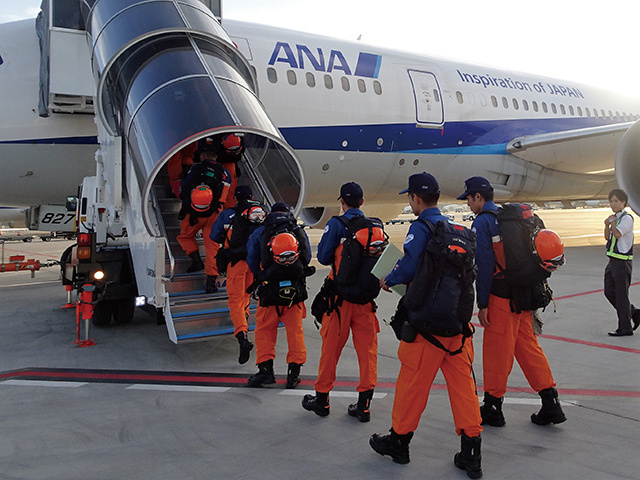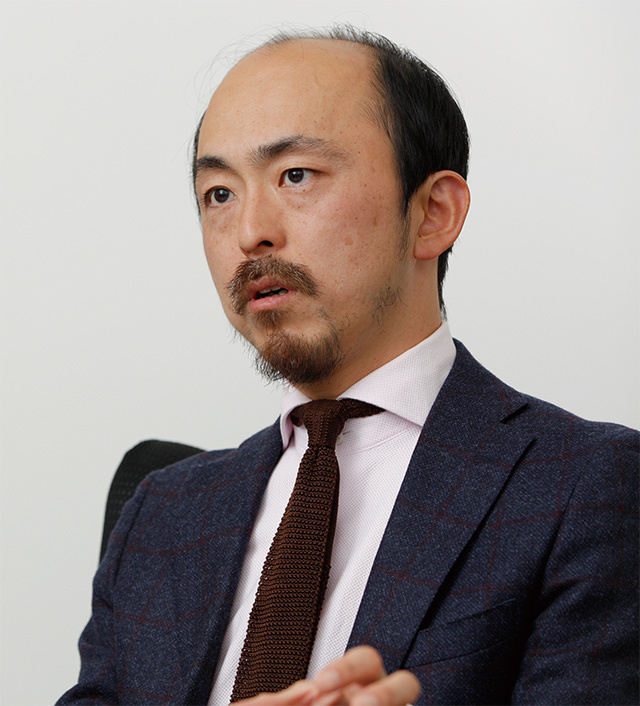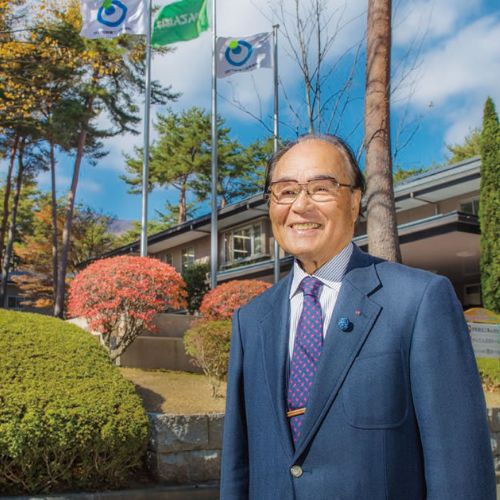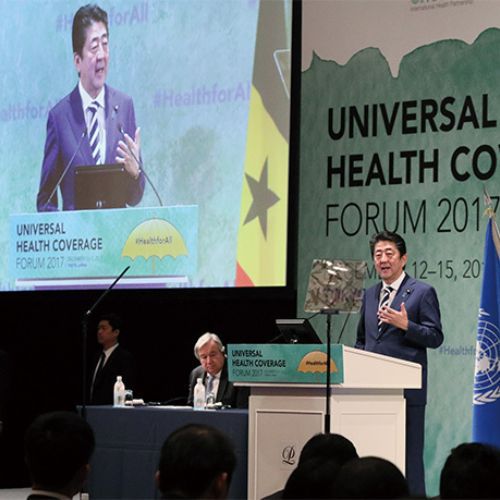On September 19, 2017 at 1:14 p.m. (local time), a magnitude 7.1 earthquake struck central Mexico, collapsing many buildings even in the capital, Mexico City.
Upon receiving a request from the Mexican government, Japan’s Minister for Foreign Affairs decided that same day to dispatch the Japan Disaster Relief (JDR) Rescue Team, and that evening, two officials from the Secretariat in the Japan International Cooperation Agency ( JICA) promptly departed for Mexico as an advance survey team. Each time a JDR rescue team is deployed, it is formed from personnel on a registry of selected police officers, firefighters, and coast guard members. These personnel have undergone regular training, enabling them to respond rapidly and precisely to large-scale disasters, and they are always ready to depart Japan within 24 hours of receiving a deployment order from the Minister for Foreign Affairs.
Dispatches of the Japan Disaster Relief Rescue Team
The Japan Disaster Relief Rescue Team holds a “heavy” classification in accordance with International Search and Rescue Advisory Group (INSARAG) guidelines. This classification, the highest in the system, indicates the capability to engage in continuous relief operations around the clock for 10 days at two separate worksites simultaneously and to coordinate other international rescue teams.
In response to this large-scale earthquake in Mexico, a total of 72 people—the JDR rescue team members, officials from the Ministry of Foreign Affairs, JICA officials, a medical team, structural assessment experts, logistics experts, and other personnel—and four search and rescue dogs hastened to the disaster area seeking to save as many lives as possible within the first 72 hours of the disaster striking, after which the survival rate drops precipitously. The team also prepared generators, materials and equipment for search operations, rescue equipment such as engine cutters to slice through steel and concrete, and other items based on a predetermined list of priorities, then transported the items to the disaster area after loading their aircraft right up to its maximum capacity.
Junichi Hirano of the JICA Japan Disaster Relief Team Secretariat was among those dispatched and he served as the coordinator of logistical support for the team’s operations. He recounted his experience saying, “The JDR Rescue Team operates on the principle of never burdening the recipient country with the need for transport, food, shelter, or anything else necessary for its operations. But in Mexico, in addition to the backup provided by the Embassy of Japan in Mexico and the JICA Mexico Office, Japan-affiliated companies and the association of Nikkei (Japanese descendants) did everything they could to lend us a hand, for example by opening up the Japan-Mexico Center to us as a base for our operations.”
The Japanese rescue team worked in cooperation with a Mexican rescue team and conducted joint search and rescue operations around the clock for three days at three disaster-stricken locations in the central part of Mexico City, where concrete buildings had collapsed. When they finished, local residents who had seen how intently the Japanese team worked surrounded the team members and conveyed their gratitude by bowing Japanese-style while saying “Domo arigato gozaimashita”—“Thank you” in Japanese. It was a scene the team members will never forget. The local media also covered the search and rescue efforts made by Japan, which had sent the largest number of personnel to the disaster area.
Junichi Hirano
In 2008, while stationed at the JICA Myanmar Office, Hirano encountered Cyclone Nargis, which left 140,000 people deceased or missing and caused enormous damage. His engagement in emergency assistance and in recovery and reconstruction assistance activities for the disaster-stricken areas served as a springboard for earning a master’s degree in disaster management at the University of Copenhagen. He now specializes in disaster risk reduction and emergency relief mainly in the ASEAN region and aims to further develop his expertise in this field.
Hirano further recounted, “In addition to our technical abilities in search and rescue, people also appreciated the dignity we accorded to those who lost their lives, such as the silent prayers we offered upon finding deceased people in the rubble. Moreover, an expert from Mexico’s National Center for the Prevention of Disasters said that collapses had been avoided among buildings constructed using earthquake resistance techniques transferred through JICA's assistance after the enormous damage caused by the 1985 Mexico City quake, and that this had prevented further casualties.”
Because Japan has a long history of dealing with a wide range of natural disasters, including earthquakes, tsunamis, and typhoons, it has abundant experience and technical know-how regarding the entire disaster management cycle of response, recovery and reconstruction, as well as mitigation and preparedness. The Japanese government provides disaster management assistance emphasizing mitigation and preparedness so that others can make use of this know-how and the lessons from past megadisasters in Japan. It also works to disseminate disaster management techniques by dispatching experts overseas and by accepting officials in charge of disaster management from overseas as trainees.
Hirano says, “In developing countries, it is investment in the disaster risk reduction sector before disasters occur that forms the foundation for realizing sustained development. Japan actively promotes international cooperation for disaster risk reduction, and when Japan is struck by a large-scale disaster, teams from other countries will rush to our aid. As someone involved in relief efforts, I am proud that the bonds of friendship that Japan has forged all over the world have become a force that mutually assists people threatened by crises.”


























